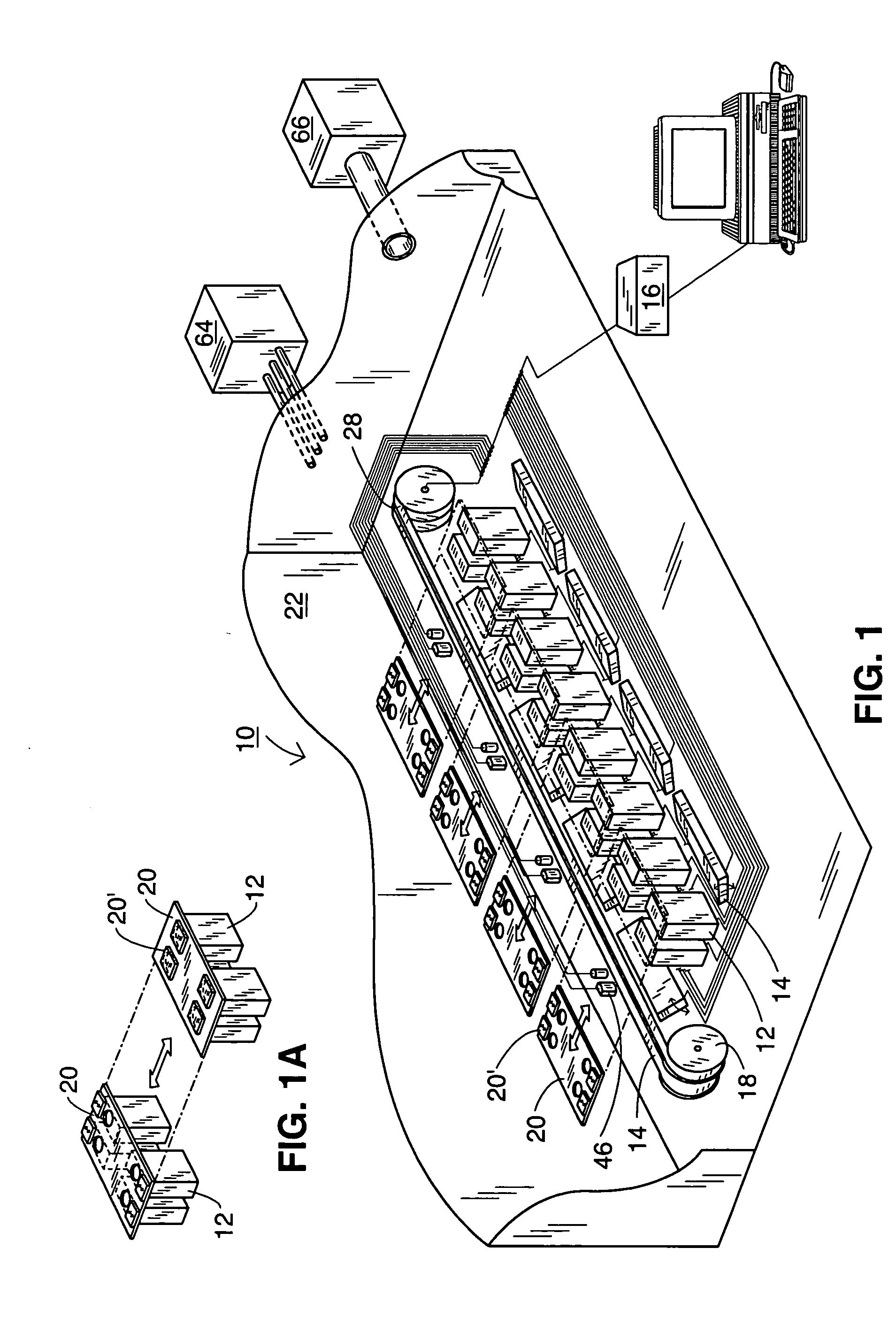Tape-manufacturing system having extended operational capabilites
a manufacturing system and capability technology, applied in the direction of superconductor devices, vacuum evaporation coatings, coatings, etc., can solve the problems of short hts conductor samples fabricated at high performance levels, limited size of available ion beam sputter sources, and long production runs
- Summary
- Abstract
- Description
- Claims
- Application Information
AI Technical Summary
Benefits of technology
Problems solved by technology
Method used
Image
Examples
Embodiment Construction
[0039] In the following description, like reference characters designate like or corresponding parts throughout the several views shown in the figures. It is also understood that terms such as “top,”“bottom,”“outward,”“inward,” and the like are words of convenience and are not to be construed as limiting terms.
[0040] Referring to the drawings in general and to FIGS. 1 and 2 in particular, it will be understood that the illustrations are for the purpose of describing preferred embodiments of the invention and are not intended to limit the invention thereto. In FIG. 1, an isometric schematic of a tape-manufacturing system 10 according to the present invention is depicted. In FIG. 2, a cross-sectional schematic of a tape-manufacturing system 10 according to the present invention is depicted.
[0041] Referring now to FIGS. 1 and 2, the tape-manufacturing system 10 is capable of coating an elongate substrate or tape substrate 28 having greater lengths in less time, while at the same time...
PUM
| Property | Measurement | Unit |
|---|---|---|
| Length | aaaaa | aaaaa |
| Length | aaaaa | aaaaa |
| Length | aaaaa | aaaaa |
Abstract
Description
Claims
Application Information
 Login to View More
Login to View More - R&D
- Intellectual Property
- Life Sciences
- Materials
- Tech Scout
- Unparalleled Data Quality
- Higher Quality Content
- 60% Fewer Hallucinations
Browse by: Latest US Patents, China's latest patents, Technical Efficacy Thesaurus, Application Domain, Technology Topic, Popular Technical Reports.
© 2025 PatSnap. All rights reserved.Legal|Privacy policy|Modern Slavery Act Transparency Statement|Sitemap|About US| Contact US: help@patsnap.com



